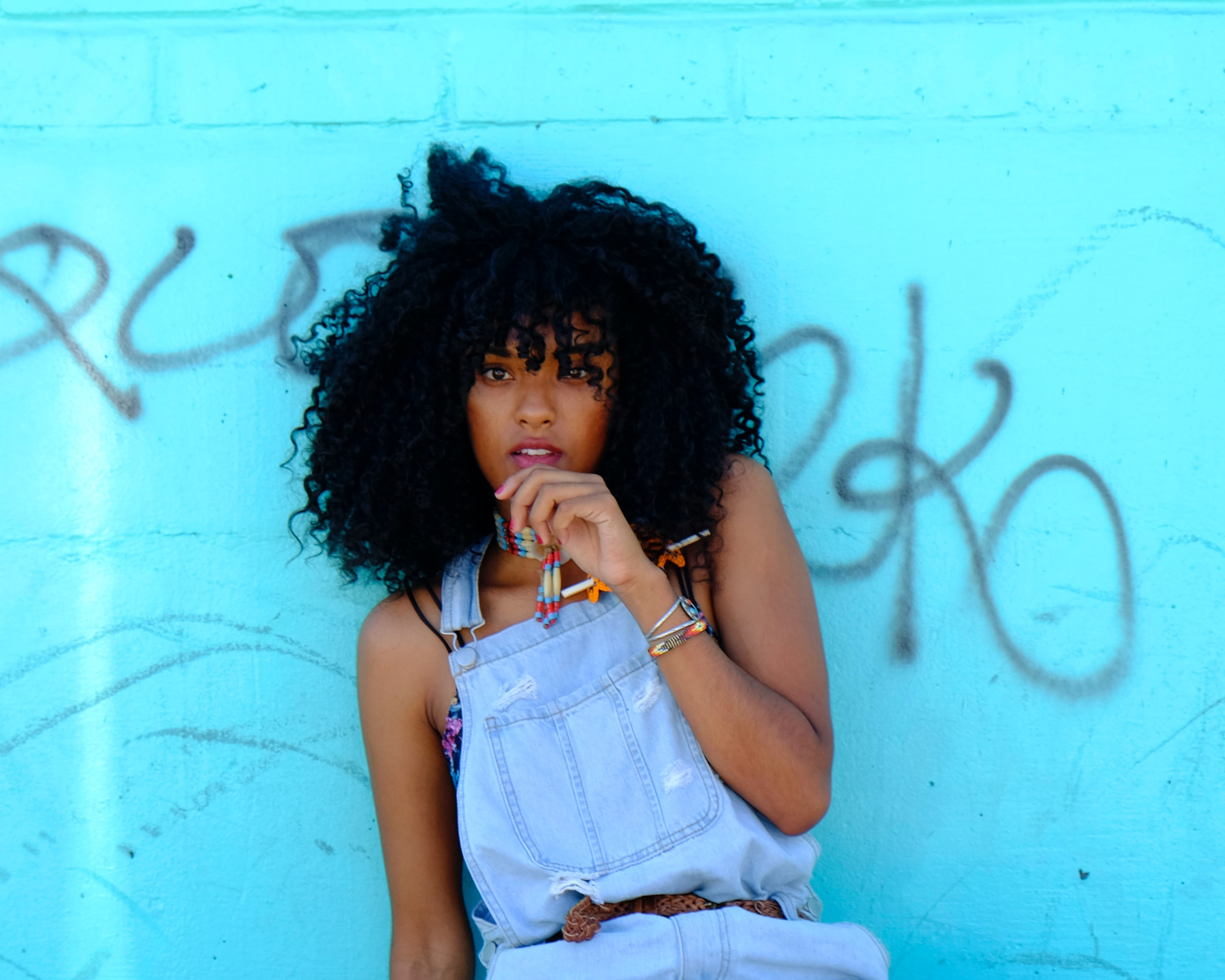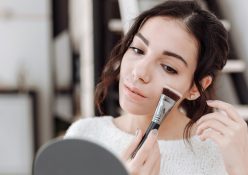In a world where the natural hair movement is growing, and more products are being developed to treat and maintain it, knowing your curls is the key to understanding what your hair needs to thrive.
How to identify your curl type
TYPE 2: WAVY HAIR
From obviously natural wavy hair, to more subtle waves, this hair type is often clumped in with curly hair types. Wavy hair tends to be straight when wet and then ripples as it loses moisture and settles into its wavy pattern. It’s different from curly hair as it is looser and unable to curl around itself. Wavy hair needs nourishment and products that offer lightweight volume.
TIP Apply lightweight products sparingly, to avoid weighing your hair down.
Type 2A: Soft Wave
Soft waves typically stem from smooth, straight roots and gain their shape towards the end. This wave type is low maintenance in terms of product and is easy to comb, air drying is the best way to embrace this hair type.
TIP Opt for lightweight cleansing shampoos and conditioners to maintain optimal volume. To boost volume, a lightweight mousse to lift your roots.
Type 2B: Wavy
This hair type grows straight and forms medium to large S-shaped beachy waves from the root. Since this type tends to frizz more than Type 2A, leave-in conditioners are your friend for coating strands and keeping your waves intact in humid weather.
TIP Maintain the beachy, bouncy shape of waves and keep them detangled by using gentle, softening shampoo and a good conditioner.
Type 2C: Deep Waves
Deep waves are identified as small to medium size waves that create an S-shape as they grow. This is the border between wavy and curly hair. While for some this may look like a typically curly hair, 2C does not coil and is most prone to frizz in the wavy category.
TIP Keep frizz at bay with lightweight leave-in products and hair serums to balance moisture and movement.
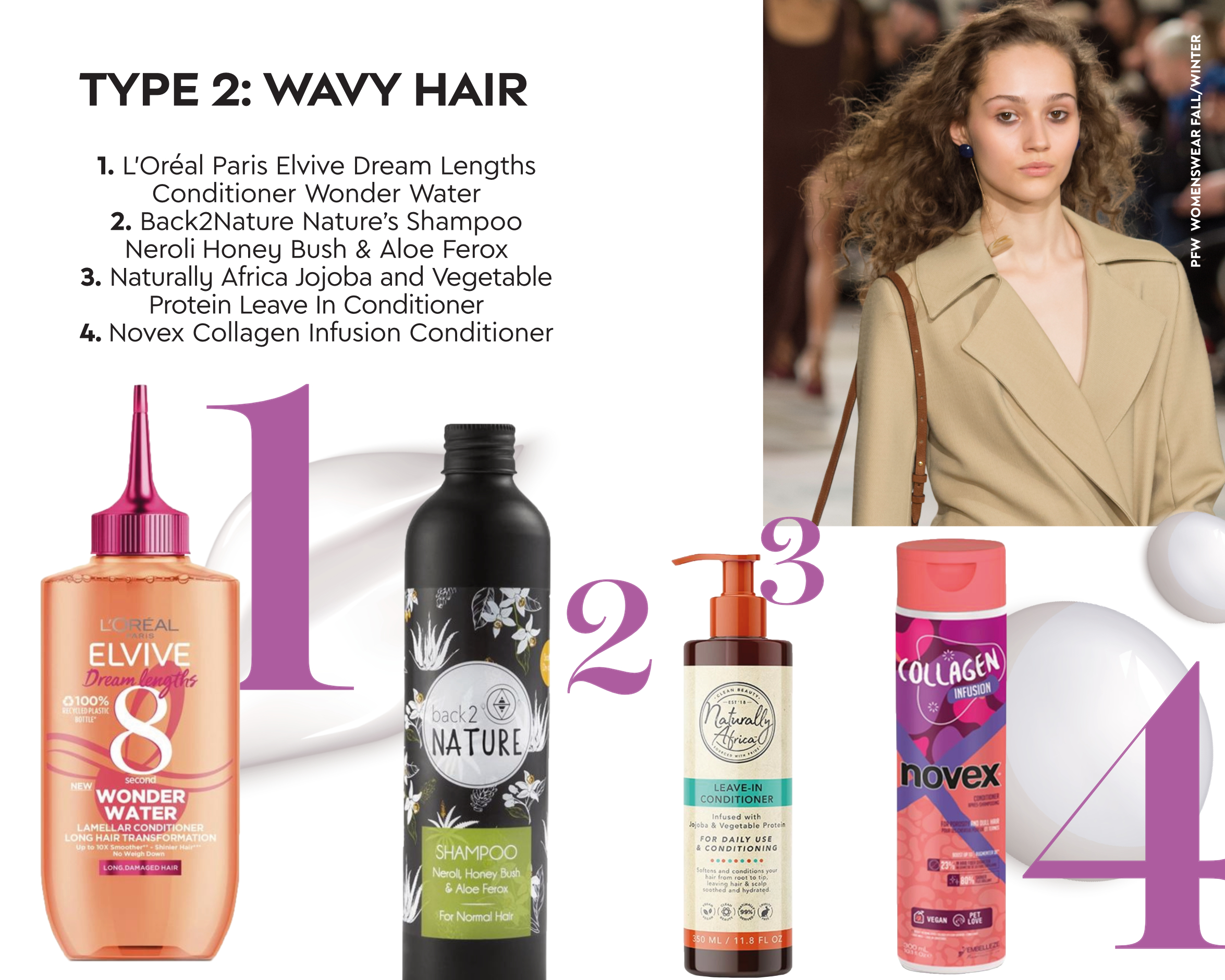
TYPE 3 CURLS
This category groups hair that curls into springs and corkscrew shapes. Wet hair is wavy and the curls usually look like waves with a three-dimensional twirly shape as they dry. Here, each strand of hair type can be unique or varied. This category includes many different hair thicknesses (fine, medium, or thick) and combines wavy and coiling strands.
TIP Choose products that are specially formulated for curls to prevent dryness and excessive frizz.
Type 3A: Soft Curl
These curls are spirals large in diameter and are typically not coarse, instead, bouncy and even with minimal styling. It’s usually the easiest curls to manage and with the right products, doesn’t need a whole lot of styling.
TIP Opt for well-balanced and nourishing styling creams to help control strands when styling and drying, preferably a formula that boosts shine. Some elbow grease is needed to smooth and straighten this hair type. It’s best to leave it natural to avoid breakage from heat styling and hair-fall. If you are heat-styling, be sure to invest in a good protectant and regular hair masks to maintain moisture and reduce splitting and breakage.
Type 3B: Curly
Think well-defined medium size springs that resemble corkscrews. Volume is no issue with these hair types as each spring is individually well-defined and bounce off each other to create volume and shape. Most prone to breakage and mattified frizz, moisture plays a primary role in maintaining these curls.
TIP Dry your hair with a soft cotton t-shirt, to avoid straining your curls and stripping it of moisture which creates a dull, dry appearance. Invest in a good hair oil and serum that keeps frizz at bay. Keep your curls looking shiny and luscious with regular treatments and gentle cleansing washes to combat build-up.
Type 3C: Ultra curly
This hair type has smaller, more dense curls than 3B, it ranges from defined, to loose helices. A detangling comb is essential to avoid breakage and light dreading when left too long. Because of the density, your scalp needs extra TLC to stay healthy and clean.
TIP Cleansing conditioners will help to clean and nourish your hair and scalp.
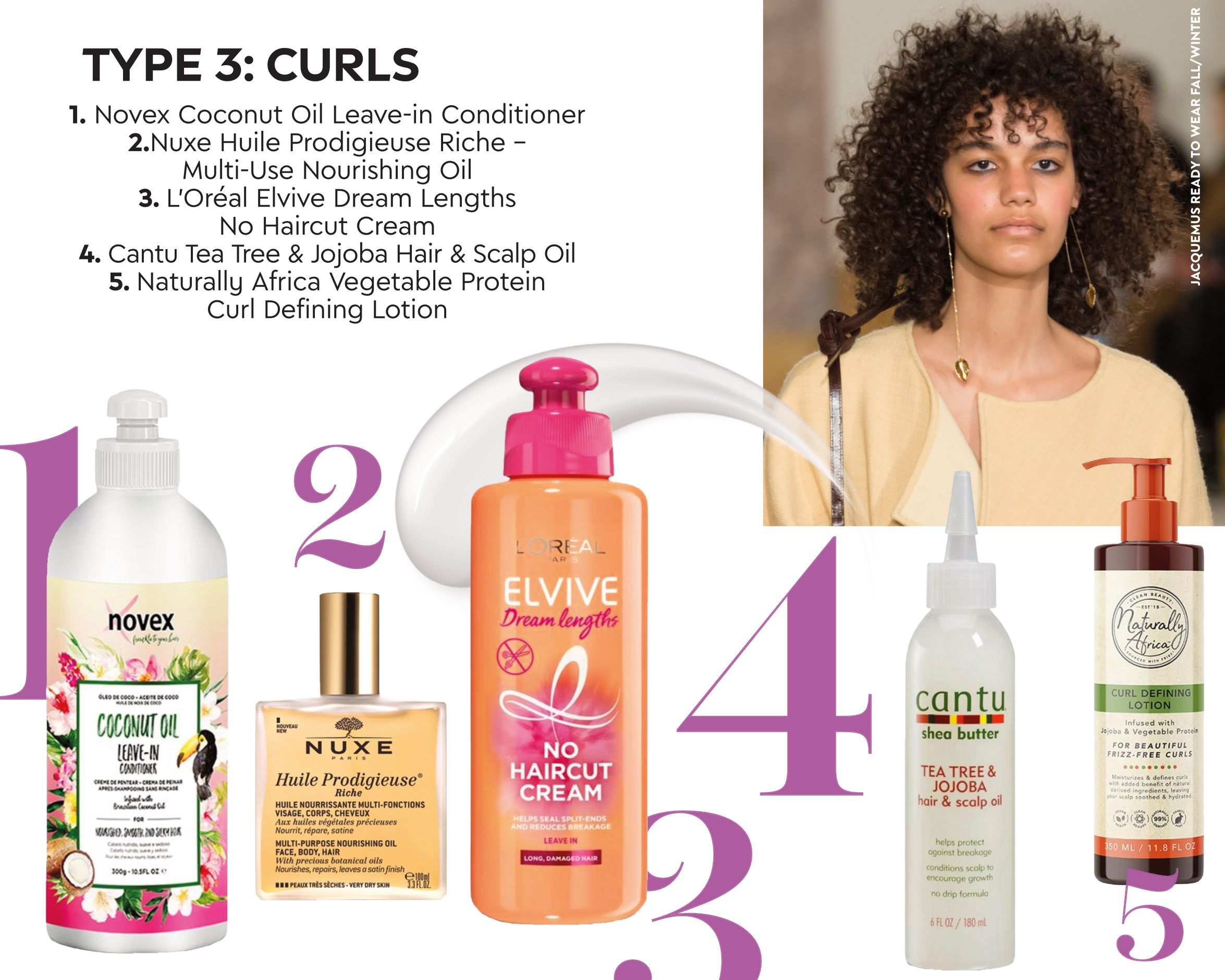
TYPE 4 CURLS
This hair type typically shapes into a zigzag pattern that doesn’t spiral or can be a tightly-wound S-shaped curl – it can even be a mix of the two shapes.
TIP To determine if this is your curl, notice the length when your hair is wet and then when dried, type 4 curls tend to shrink when dried so it’s an easy tell.
Type 4A: Coiled
This type is characterised by small, distinctive S-shaped strands, looped alongside each other into tight rings. This curl type care includes creams and oils to support the moisture balance, manage frizz and maintain a nourished, soft feel.
TIP Reduce damage by opting for products with nourishing ingredients and pat your hair dry gently to avoid excessive friction.
Type 4B: Zigzag
This curl type is characterised by its tiny zigzagged pattern, usually accompanied by tighter and S-shaped coils. With a vast variety of different styles, there are a lot of product options formulated with varying ratios of key conditioning ingredients. For this type, double conditioning is essential – in the shower and for post shower styling.
TIP Opt for ingredients that include butters, oils and other key botanical to treat and nourish each strand. Avoid sulphates and ingredients that strip your hair of its natural moisture.
Type 4C: Tightly coiled
Tightly coiled strands are more fragile than any other curl pattern and most prone to breakage, maintaining moisture is essential. Treat your hair to weekly hot oil treatments with ingredients like avocado, coconut, castor or almond oil to maintain and lock in moisture.
TIP When applying nourishing oils, use your fingers to gently detangle and separate your hair to ensure even distribution. A silk pillowcase or hair scarf will protect your hair while you sleep. It reduces friction and the loss of hydration, keeping your curls healthy and shiny.
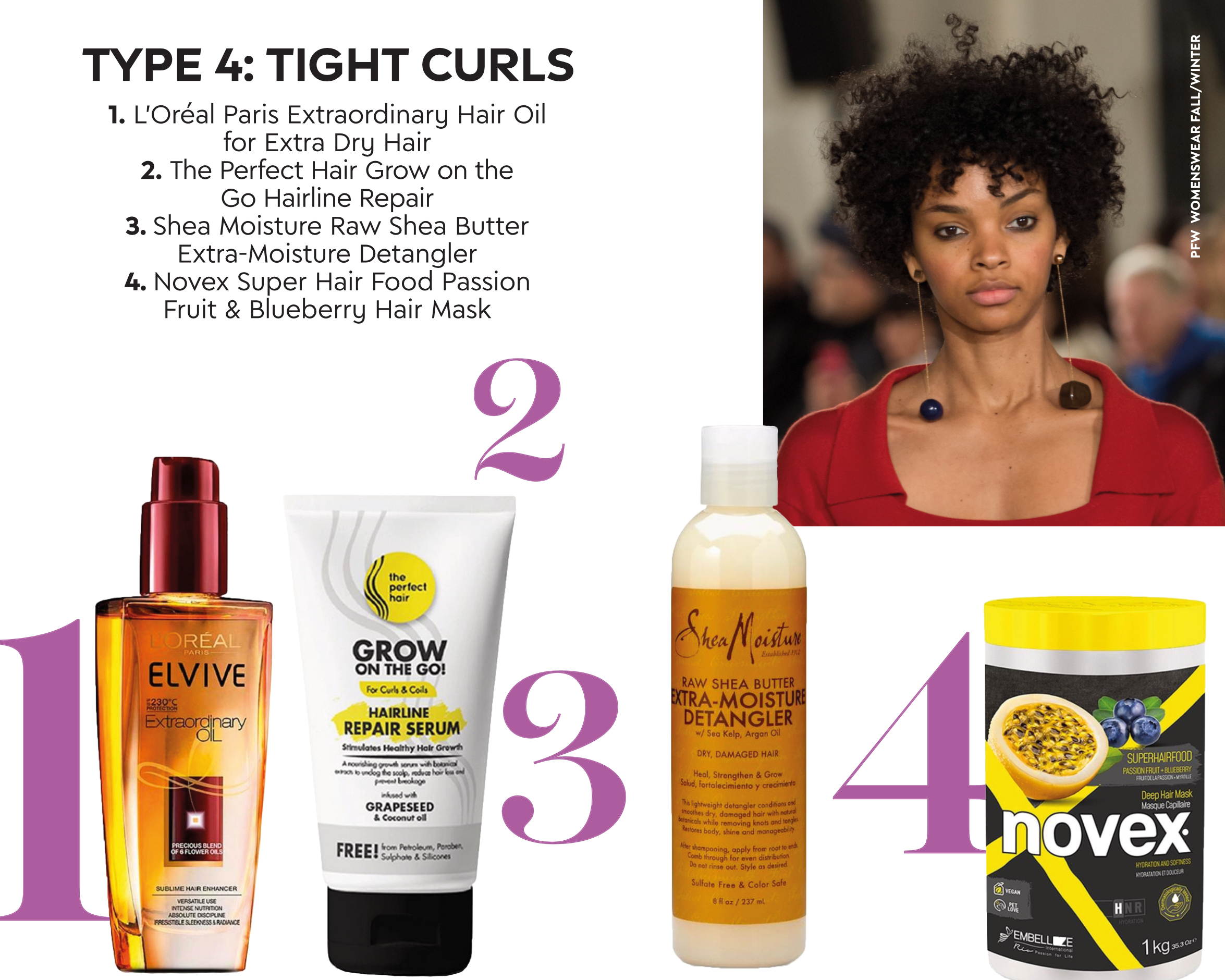
By stefanie titus-petersen
Feature image: Photo by Taisiia Stupak on Unsplash
Article Images: Gallo/GettyImages, Courtesy images

